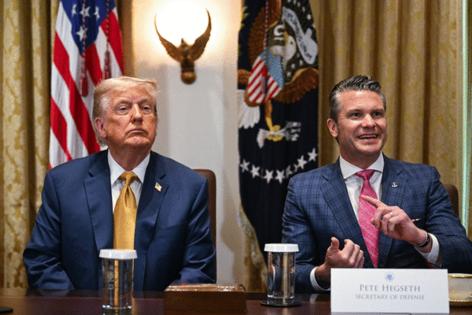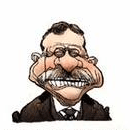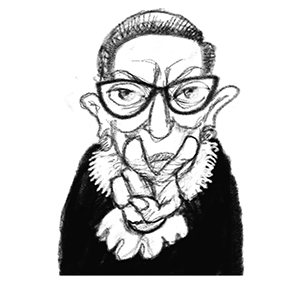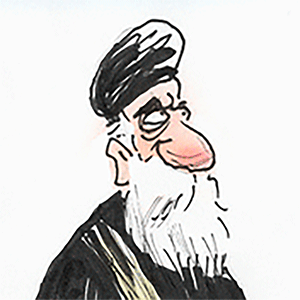Trump vows no tariff extension, hardens threats on copper, drugs
Published in News & Features
President Donald Trump vowed to push forward with his aggressive tariff regime in the coming days, stressing he would not offer additional extensions on country-specific levies set to now hit in early August while indicating he could announce substantial new rates on imports of copper and pharmaceuticals.
The posturing on social media and at a Cabinet meeting on Tuesday came after traders initially shrugged off a series of letters and executive actions Trump issued Monday, pushing back the deadline for his so-called “reciprocal” tariffs while announcing the latest rates he planned for more than a dozen countries that had not succeeded in brokering quick trade agreements.
That changed Tuesday as Trump signaled a renewed determination to push ahead with his plans to heavily tax foreign imports.
Trump said he would offer no additional delays on the country-specific tariffs, despite the previous night allowing he was “not 100% firm” on his August 1 deadline.
He said he would impose a 50% rate on copper products being sent into the U.S., surging futures of the commodity to their largest intraday gain in data going back to at least 1988.
He also told reporters that despite progress with the European Union on a trade deal, frustration over the bloc’s taxes and fines targeting U.S. technology firms could result in him unilaterally declaring a new tariff rate within the next two days. And just hours after saying he was close to a trade deal with India, Trump said he would still tag imports from the country with an additional 10% levy for their participation in BRICS, a collection of developing nations.
Moreover, he said, drug companies could face a tax as high as 200% on imports if they didn’t move production to the U.S. in the next year.
“We want to have relationships, but in every case, they treated us far worse than I’m treating them,” Trump said of trading partners.
As investors assessed the latest trade news, the S&P 500 wavered. Treasuries joined a global drop in longer-dated bonds.
Trump opened the morning with a social media post declaring his new rates would hit at the beginning of August, despite speculation that he might once again punt on the most punishing of tariffs.
“TARIFFS WILL START BEING PAID ON AUGUST 1, 2025. There has been no change to this date, and there will be no change,” Trump wrote on his Truth Social platform on Tuesday. “In other words, all money will be due and payable starting AUGUST 1, 2025 — No extensions will be granted.”
Trump began notifying trading partners of the new rates on Monday ahead of what was initially a deadline this week for countries to wrap up trade negotiations with his administration. Commerce Secretary Howard Lutnick, speaking to CNBC shortly after the Cabinet meeting on Tuesday, said he expected an additional 15-20 letters to be released in the coming two days.
But the new letters, unilaterally setting duties on countries that fail to reach deals, came alongside an executive order delaying the tariff date for three weeks, effectively giving trading partners an extension for talks.
That caveat — paired with Trump signaling that he was still negotiating additional deals — fueled speculation among some in Washington and on Wall Street that the president would not follow through on his latest tariff threats.
On Tuesday, Trump adopted a more strident tone as he addressed reporters during a Cabinet meeting, saying that despite previously indicating he was close to a trade deal with India, he still planned to punish the country for its participation in the BRICS forum. Trump said the group of developing countries was “set up to hurt us.”
“I can play that game too so anybody that’s in BRICS is getting a 10%” tariff addition, Trump said.
Trump also said that he was close to sending the European Union a letter unilaterally setting tariff rates, despite reported progress in trade talks with the bloc. The president said that while European nations were now “treating us very nicely,” he remained frustrated over longstanding trade deficits and digital services taxes and fines impacting U.S. technology companies.
“We’re probably two days off from sending them a letter,” Trump said.
And, Trump said, he would impose tariffs of 60% or 70% on some nations as he issued additional letters in the coming days.
“I just want you to know a letter means a deal,” Trump said.
Trump also he was still planning tariffs on select industries, including drugs, semiconductors, and metals.
“I believe the tariff on copper we’re going to make it 50%,” Trump said when asked by a reporter what the rate on those products would be.
Trump said he expected to offer pharmaceutical manufacturers some time to bring their operations to the U.S. before slapping tariffs of as much as 200% on their products.
An S&P 500 index of drugmakers turned negative after Trump’s comments, while shares of Eli Lilly & Co., Merck & Co. and Pfizer Inc. pared earlier gains.
“We’re going to give people about a year, a year and a half, to come in,” Trump said. “And after that they’re going to be tariffed if they have to bring the pharmaceuticals into the country, the drugs and other things, into the country. They’re going to be tariffed at a very, very high rate, like 200%. We’ll give them a certain period of time to get their act together.”
Trump has already announced investigations under Section 232 of the Trade Expansion Act of 1962 on each of those products, arguing that a flood of foreign imports was threatening national security. After those efforts are concluded, Trump is expected to move forward with the levies.
The effort is separate from the country-specific tariff rates, which White House officials have said would not apply to products hit under his Section 232 efforts.
The move was only the latest in a trade agenda that has seen numerous delays and reversals as Trump has used the threat of tariffs to reshape global trade flows and pressure companies to shift more manufacturing jobs to the United States, roiling financial markets in the process.
Trump initially announced the higher reciprocal rates on over 50 trading partners on April 2, but lowered those rates temporarily to 10% for 90-days, allowing time for negotiations. That deadline was set to expire this week, but Trump signed an executive order on Monday pushing implementation until Aug. 1.
While the administration initially talked up plans to hold concurrent negotiations with dozens of partners, so far the U.S. has only finalized framework trade deals with the UK and Vietnam — with many key details still unresolved — and achieved a truce with China to lower rates.
The tariff notifications sent on Monday largely kept in place the rates Trump had earlier said nations would face if talks did not secure agreements. Japan and South Korea were hit with 25% tariffs, while South Africa received a 30% and Laos and Myanmar were hit with 40% levies.
Trump has also warned nations not to retaliate, saying that any moves to counter the U.S. would see duties increased by that amount.
_____
©2025 Bloomberg L.P. Visit bloomberg.com. Distributed by Tribune Content Agency, LLC.







Comments